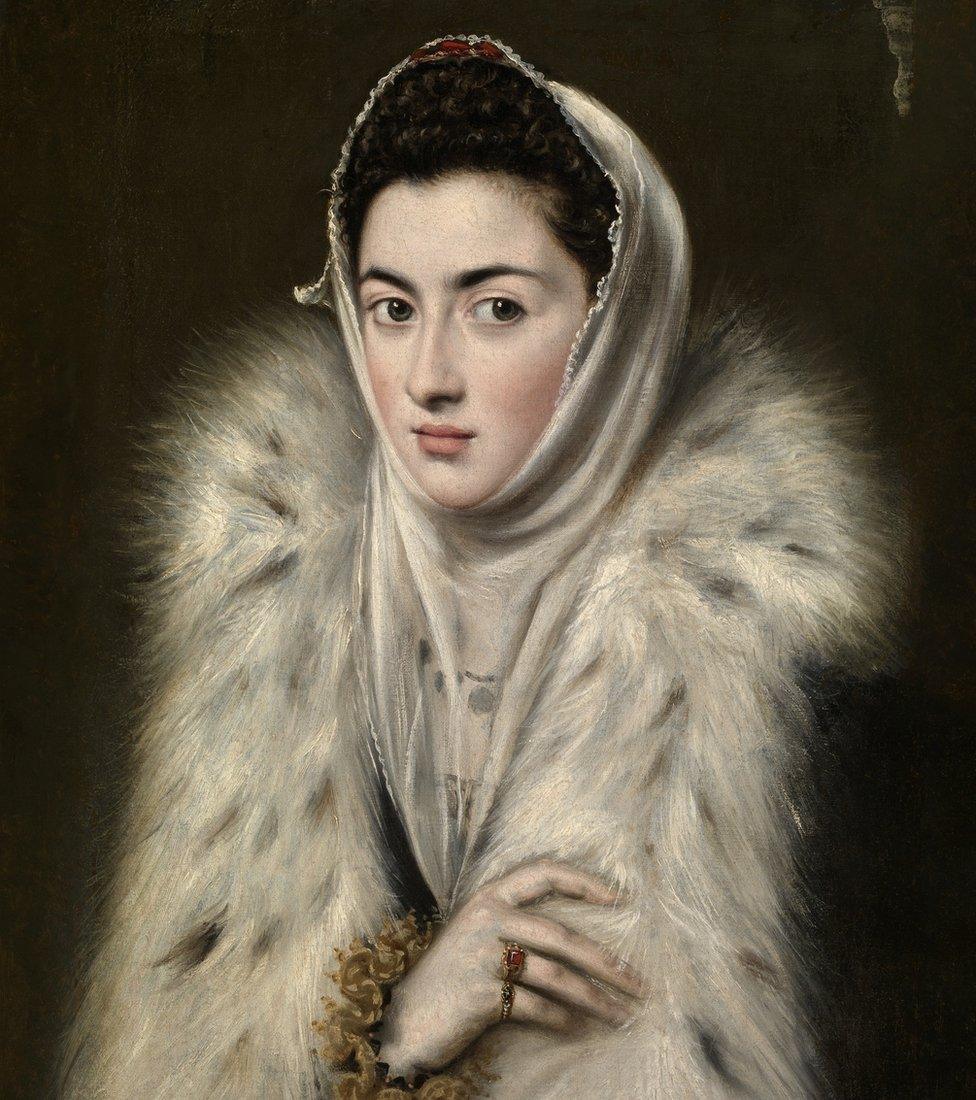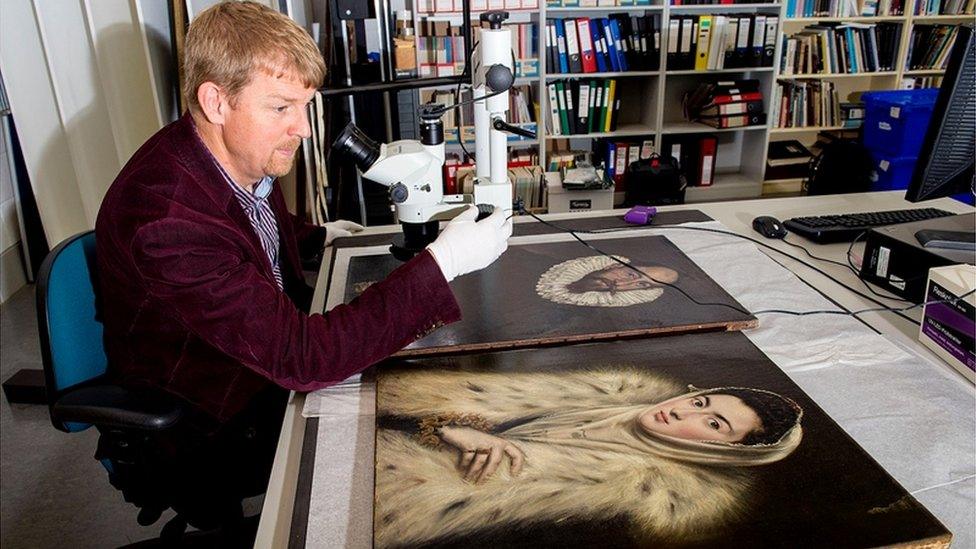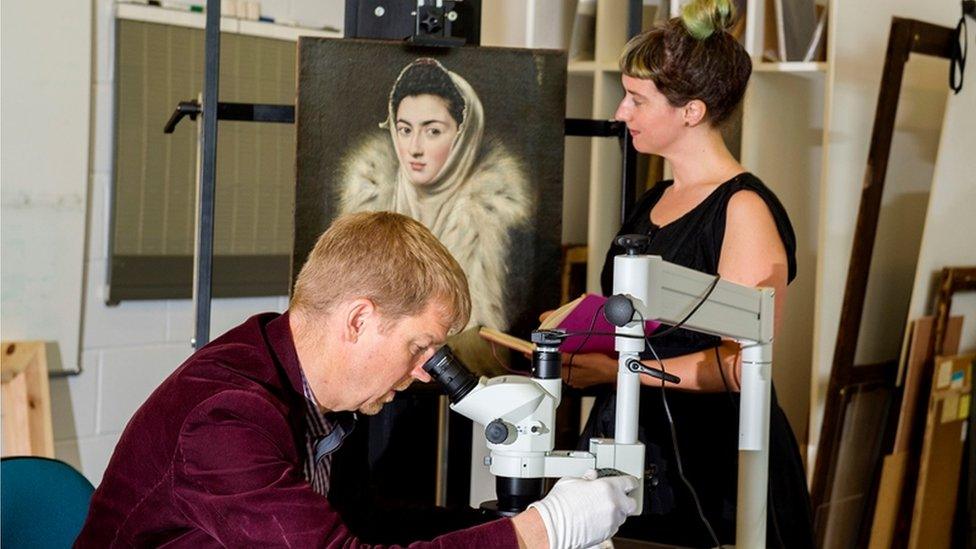Experts tackle mystery of 'El Greco' Lady in a Fur Wrap
- Published

Such informal portraits of women in the 16th century are extremely rare
One of Scotland's most iconic paintings is to be studied to establish if it was painted by the 16th Century master El Greco.
The Lady in a Fur Wrap, owned by Glasgow Museums, has fascinated viewers since she was first exhibited in 1838.
Attributed to El Greco, the identity of both painter and the woman depicted have provoked much debate.
Experts will use comparative studies and latest technology to try to shed light on the mystery.
The painting is unsigned but has been attributed to Greek-born artist Domenikos Theotokopoulos - more commonly known as El Greco - since it was displayed at the Louvre as part of the collection of French king Louis Philippe I.
It was bought by Sir William Stirling Maxwell in 1853 and bequeathed to the city of Glasgow 50 years ago, along with Pollok House where the painting currently hangs.
The painting is thought to date from the late 1570s, soon after El Greco moved to Spain, but its informal style is unique among works attributed to the artist who is better known for his anguished depictions of saints and martyrs.

Dr Mark Richter will co-ordinate the scientific investigation
Three years ago, Antonio Garcia, a former culture editor of Spain's El Mundo newspaper, produced a report arguing the painting was by a different artist.
An international research project, led by the University of Glasgow in partnership with Glasgow Museums, will now try to learn more about the masterpiece.
Latest scientific analysis will examine the materials used, brush strokes and underlying sketches while other experts will offer insights from the history of dress, society and collecting.
The scientific examination will build upon a previous investigation carried out in 2014.
Other paintings in the Stirling Maxwell collection will also be studied and the comparative work will involve the Prado Museum in Madrid.
Duncan Dornan, head of Glasgow Museums, said: "We are pleased to partner with the foremost experts in the field of Spanish art to gain a fuller understanding of this iconic painting's creation through comparative study of related works in our collection."

Dr Hilary Macartney, right, said experts on jewellery and fashion would be consulted
Dr Mark Richter, from the University of Glasgow, who is coordinating the scientific investigation, said it may not provide all the answers.
He said: "Although there is no guarantee of definitive results through technical analysis we will at the very least learn much more about how this most enigmatic portrait was painted and the relationship of its materials and methods of creation to those of other important pictures in this and other collections, as well as to the main writings on art theory and practice at this period."
Dr Hilary Macartney, who is leading the research at the University of Glasgow, added:"Other lines of enquiry, such as research on dress and jewellery, the status of people represented in portraiture in this period, and history of collecting will be equally important."
A three-day symposium announcing the findings of the research is anticipated in early 2019.